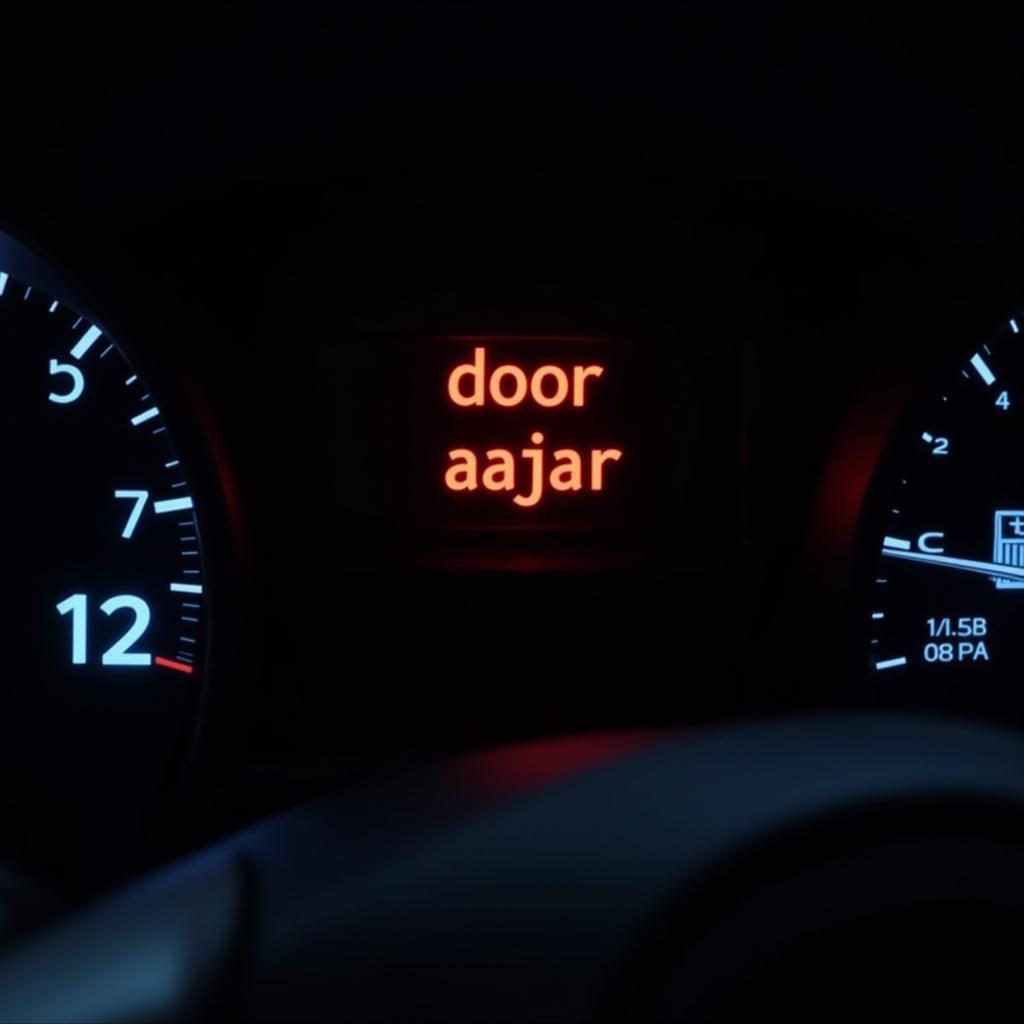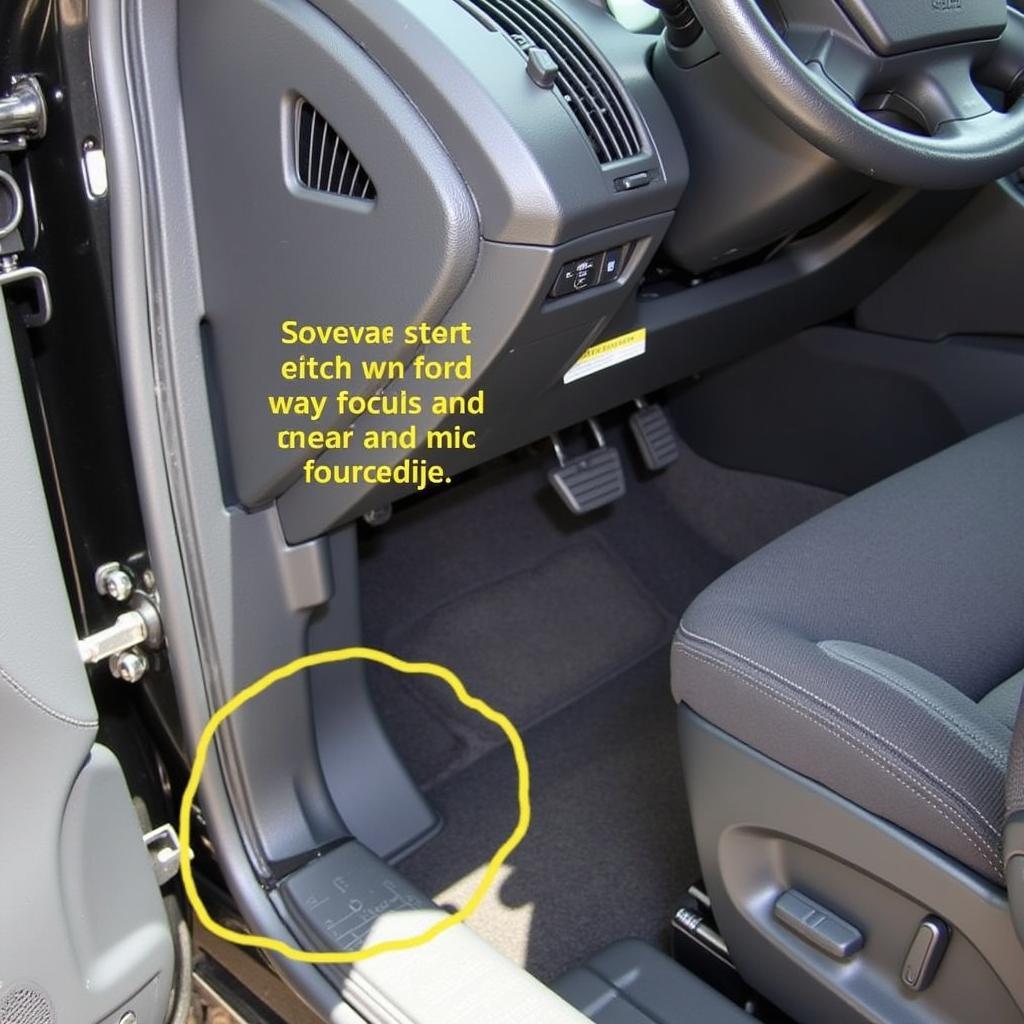You’re driving along, come to a stop, and suddenly your Ford Focus dashboard lights up with a “door ajar” warning. But all the doors are closed, right? This frustrating and surprisingly common issue, often triggered when applying the brakes, can leave Ford Focus owners baffled. This article delves into the common causes behind this issue, provides step-by-step troubleshooting tips, and outlines potential solutions to help you reclaim your peace of mind on the road.
 Ford Focus dashboard displaying door ajar warning
Ford Focus dashboard displaying door ajar warning
Understanding the Ford Focus Door Ajar System
Modern cars like the Ford Focus are equipped with sophisticated sensor systems designed to enhance safety and convenience. The door ajar warning system is a prime example. It relies on strategically placed switches, typically within the door latch assemblies, to detect whether a door is open, closed, or slightly ajar. When a door is closed securely, the switch engages, signaling to the car’s computer that everything is in order. However, when these sensors malfunction or send faulty signals, the dreaded “door ajar” warning can appear, even when there’s no apparent issue.
Common Causes of a False “Door Ajar” Warning
Several factors can contribute to a false “door ajar” warning in a Ford Focus, often exacerbated by pressing the brake pedal:
1. Faulty Door Latch Sensors
Over time, the door latch sensors in your Ford Focus can wear down, become misaligned, or accumulate dirt and debris. This interference can disrupt the sensor’s ability to accurately detect the door’s position, leading to a false “door ajar” warning.
2. Wiring Issues
The wiring harness that connects the door latch sensors to the car’s computer can become damaged, frayed, or corroded, particularly in older Ford Focus models. This can disrupt the flow of information between the sensors and the car’s computer, triggering a false warning.
3. Body Control Module (BCM) Problems
The Body Control Module (BCM) acts as the brain for various electrical components in your Ford Focus, including the door ajar system. A malfunctioning BCM can misinterpret signals from the door latch sensors, leading to inaccurate warnings.
 Close-up view of a Ford Focus door latch sensor
Close-up view of a Ford Focus door latch sensor
Troubleshooting a Ford Focus “Door Ajar” Warning
Before heading to the mechanic, there are several troubleshooting steps you can take to identify and potentially fix the issue yourself:
1. Inspect the Doors and Latches
Start by thoroughly inspecting all the doors, including the trunk and hood, for any visible signs of damage, misalignment, or obstruction. Pay close attention to the latches and make sure they engage smoothly when the doors are closed. Sometimes, a simple adjustment or cleaning can resolve the issue.
2. Check the Wiring Harness
Carefully inspect the wiring harness that runs through the door jambs for any signs of damage, fraying, or corrosion. If you discover any issues, repairing or replacing the affected wiring may be necessary.
3. Test the Door Latch Sensors
If you have a multimeter, you can test the continuity of the door latch sensors. This involves disconnecting the sensor and checking for a change in resistance when the latch is opened and closed. A faulty sensor will not show the expected change in resistance.
Seeking Professional Assistance
If your troubleshooting efforts don’t resolve the issue, it’s time to seek professional help from a qualified automotive electrician or mechanic. They have the specialized tools, knowledge, and expertise to diagnose and repair complex electrical problems, including those related to the door ajar system in your Ford Focus. They can also access and diagnose potential issues with the Body Control Module (BCM), which may require specialized software and equipment.
 Mechanic using a multimeter to diagnose a car's electrical system
Mechanic using a multimeter to diagnose a car's electrical system
Conclusion
A persistent “door ajar” warning in your Ford Focus, especially when pressing the brakes, can be more than just a minor annoyance. It’s essential to address this issue promptly to avoid potential safety hazards and prevent further damage to your vehicle’s electrical system. By understanding the common causes and following the troubleshooting tips outlined in this article, you’ll be well-equipped to tackle this issue head-on and enjoy a safer, more enjoyable driving experience.
